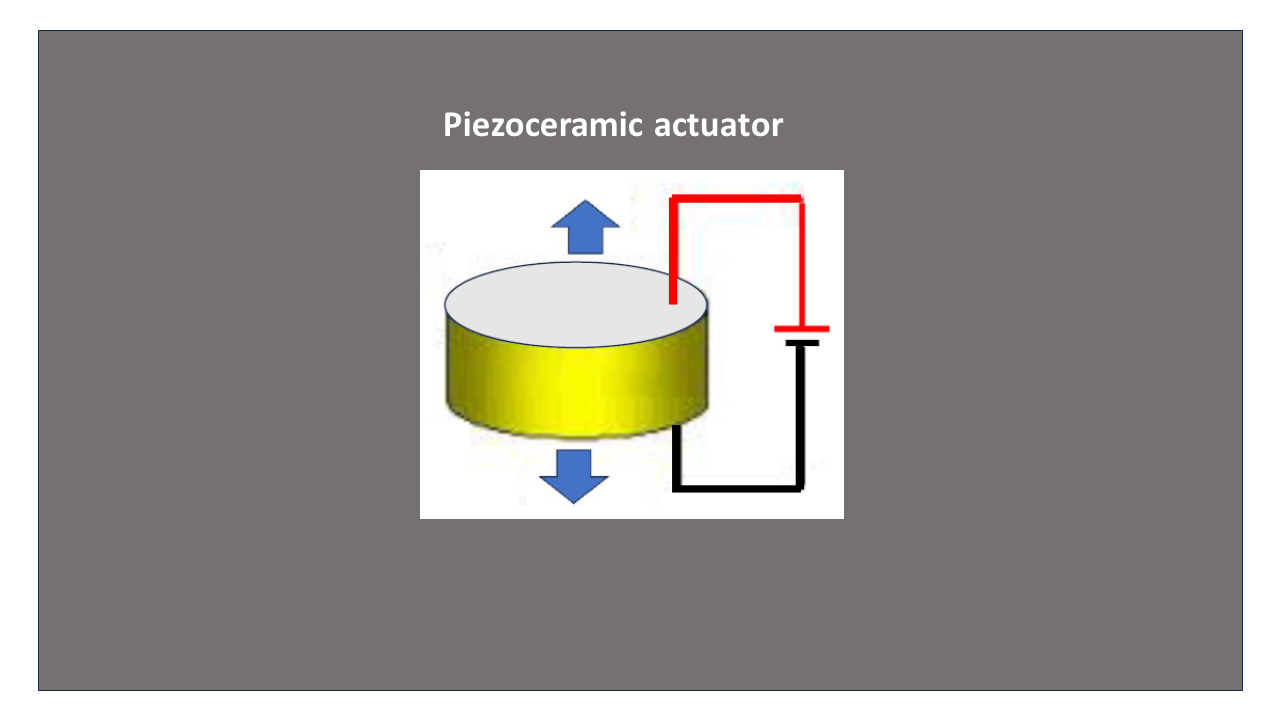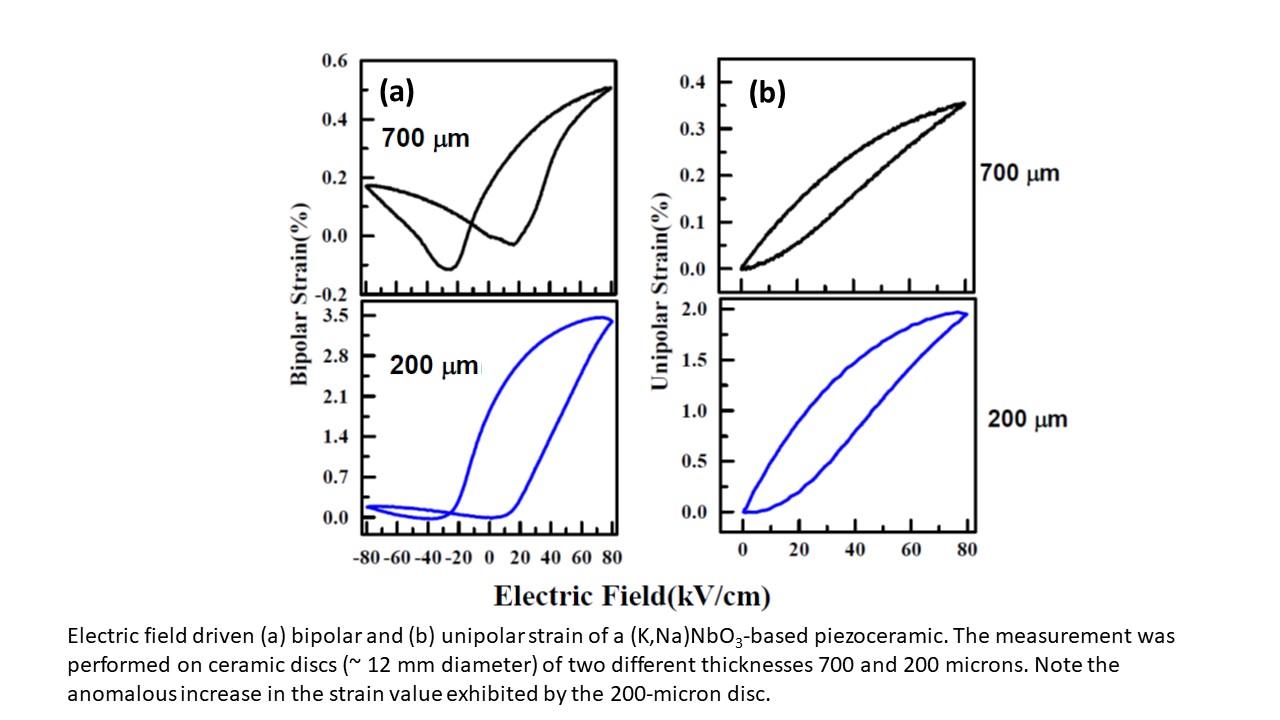Ultra-high electric field driven strain in piezoceramics made easy
Piezoelectrics are class of electrically insulating materials which develop strain on application of an electric fieldand also generate voltage when stressed. These phenomena make piezoelectrics important as actuators, pressure sensors and transducers in wide ranging applications spanning sectors like defence, healthcare, automobiles, space, etc.
Advanced piezoelectrics are ferroelectric-based materials. The ability of the electric field to reorient the ferroelectric-ferroelastic domains in ferroelectric materials enables them to exhibit relatively large electrostrain as compared to a non-ferroelectric piezoelectrics like quartz. While large strain ~1. 7 % (at electric field of 70 kV/cm) has been reported in single crystals of complex ferroelectric materials like PZN-PT, the easier-to-synthesise polycrystalline piezoceramics exhibit considerably low strain (0.2 – 0.4 %).
In contrast to the conventional materials design approach wherein the focus is on tuning the chemistry of the piezoceramic material, Rajeev Ranjan’s group in the Department of Materials Engineering, IISc, has demonstrated that ultrahigh electrostrain >1 % can be achieved merely by reducing the thickness of the piezoceramic discs down to 200 microns. Apart from its technological significance, this discovery calls for a completely new approach to understand the mechanisms associated with large electrostrain in thin piezoceramic discs.



REFERENCES:
Adhikary GD, Ranjan R, Ultrahigh measured unipolar strain >2 % in polycrystalline bulk piezoceramics: Effects of disc dimension
arxiv.org/abs/2208.07134
Adhikary GD, Singh DN, Tina GA, Muleta GJ, Ranjan R, Ultrahigh electrostrain > 1 % in lead-free piezoceramics: Role of disc geometry, Journal of Applied Physics (2023).
https://doi.org/10.1063/5.0163502
LAB WEBSITE:
https://materials.iisc.ac.in/faculty/rajeev



